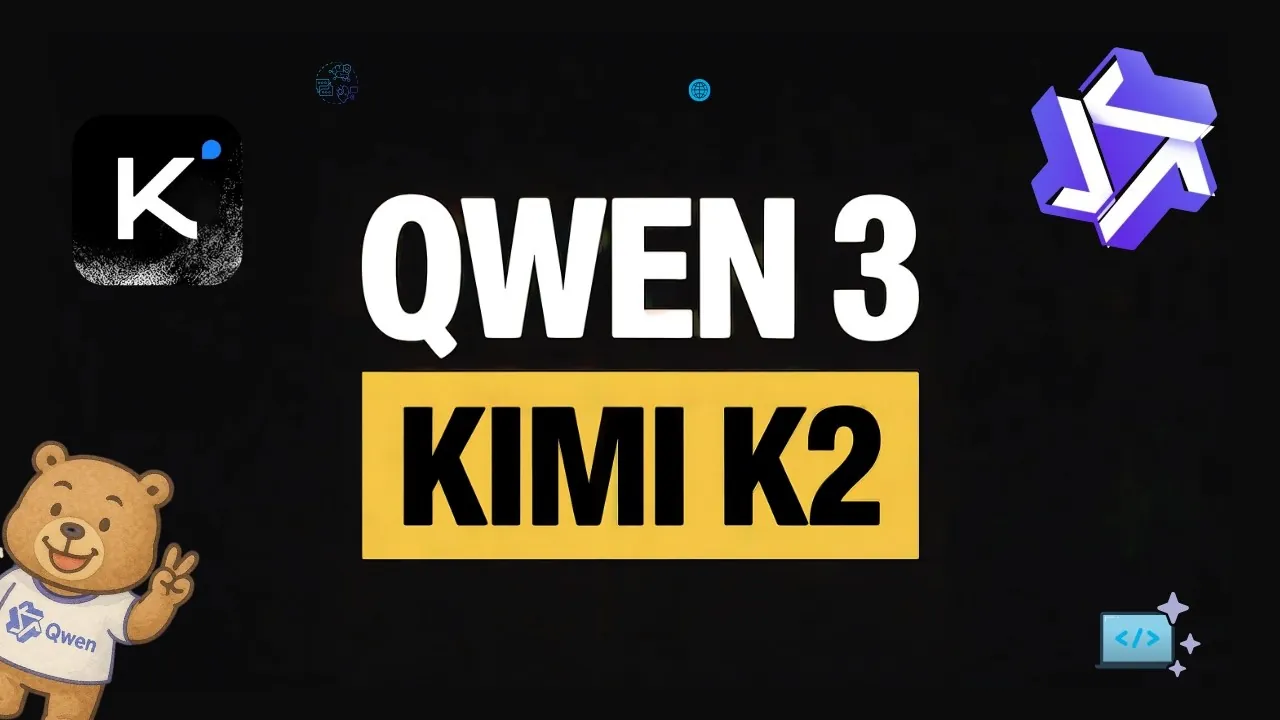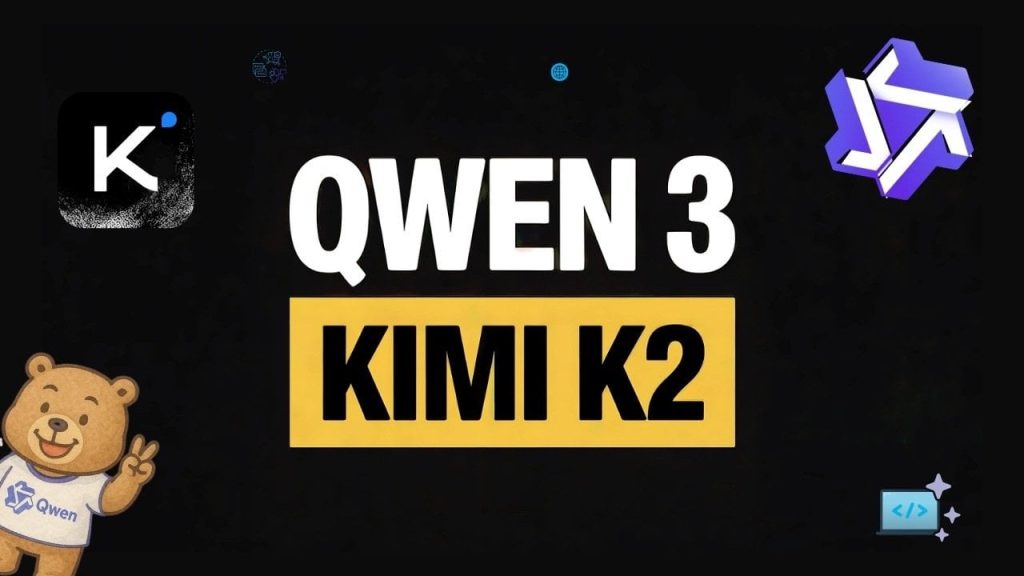
What makes an AI model truly exceptional—specialized precision or versatile adaptability? In the rapidly evolving world of artificial intelligence, this question lies at the heart of the debate between Qwen 3 vs Kimi K2, two innovative systems that represent starkly different approaches to AI development. On one side, Qwen 3’s dual-model architecture prioritizes efficiency in non-reasoning tasks, delivering unparalleled results in areas like data processing and pattern recognition. On the other, Kimi K2 champions versatility, excelling in coding, simulations, and creative problem-solving. Yet, neither model is without its limitations, and their contrasting strengths provoke a deeper conversation about the trade-offs inherent in AI design.
In this exploration, Prompt Engineering delve into the unique capabilities and shortcomings of Qwen 3 vs Kimi K2, uncovering how their distinct architectures shape their performance across critical domains. From Qwen 3’s dominance in structured problem-solving to Kimi K2’s prowess in physics-based simulations, you’ll gain insights into how these models push the boundaries of what AI can achieve—and where they fall short. More importantly, this comparison offers a glimpse into the future of AI: will specialization or versatility define the next generation of intelligent systems? The answers may surprise you, challenging conventional wisdom about what it takes to build truly fantastic AI.
Qwen 3 vs Kimi K2
TL;DR Key Takeaways :
Qwen 3 uses a dual-model architecture, excelling in non-reasoning tasks like data processing and pattern recognition, but struggles with reasoning and tool integration.
Kimi K2 is highly versatile, performing well in coding and physics-based simulations, but is less effective in non-reasoning benchmarks compared to Qwen 3.
Both models face challenges in complex problem-solving, particularly in tasks requiring deep logical reasoning and adaptability.
Qwen 3’s specialization and Kimi K2’s versatility represent contrasting strategies in AI development, each with unique strengths and trade-offs.
Future advancements in training methodologies, data quality, and model architecture are critical for addressing the limitations of both models and enhancing their capabilities.
Qwen 3: Optimized for Specialized Performance
Qwen 3 employs a dual-model architecture that separates reasoning and non-reasoning tasks into distinct systems. This design enables it to excel in non-reasoning tasks, using its 22 billion active parameters to deliver state-of-the-art results. For example, Qwen 3 achieves an impressive RKGI score of 41.8%, outperforming competitors like Kimi K2 and Opus 4 in non-reasoning benchmarks. This makes it particularly effective in areas such as data processing, structured problem-solving, and pattern recognition, where precision and efficiency are critical.
However, this specialization comes with notable trade-offs. Qwen 3 struggles with tasks requiring reasoning and spatial understanding, such as physics-based simulations and interpreting visual prompts like shadow rendering. While it demonstrates some reasoning capabilities, these remain underdeveloped, highlighting areas for future improvement. Its focus on non-reasoning tasks, while advantageous in specific domains, limits its versatility in handling more complex challenges.
Kimi K2: A Versatile Tool for Coding and Simulations
Kimi K2 takes a different approach, excelling in tasks that demand creativity, technical execution, and adaptability. Its ability to generate functional code for applications such as website development and simulate complex physical phenomena makes it a valuable tool for developers and researchers. For instance, Kimi K2 performs exceptionally well in physics-based simulations, accurately modeling planetary systems and rendering shadows with high fidelity.
Despite its strengths, Kimi K2 falls short in non-reasoning benchmarks, where Qwen 3 dominates. This contrast underscores the inherent trade-offs in AI model design: optimizing for one set of tasks often limits performance in others. Kimi K2’s versatility in coding and simulations is impressive, but its relative weakness in non-reasoning tasks highlights the challenges of creating a truly all-encompassing AI system.
Qwen 3 and Kimi K2 AI Models Compared
Stay informed about the latest in AI model comparison by exploring our other resources and articles.
Shared Challenges in Complex Problem-Solving
Both Qwen 3 and Kimi K2 encounter significant challenges when addressing complex problem-solving tasks. These tasks often require a combination of reasoning, adaptability, and creativity, areas where both models show room for improvement.
Qwen 3: While its non-reasoning focus allows it to approach reasoning-like tasks, it struggles to deliver accurate solutions for intricate problems such as navigating mazes or solving multifaceted puzzles.
Kimi K2: Its strengths in coding and simulations do not translate into strong performance in tasks requiring deep logical reasoning, limiting its effectiveness in broader problem-solving scenarios.
These shared limitations highlight the broader challenges faced by AI systems in achieving a balance between specialization and versatility. Addressing these challenges will require advancements in training methodologies, data quality, and model architecture.
Tool Integration and Strategic Design
Tool integration represents another key area of divergence between Qwen 3 and Kimi K2. Kimi K2 incorporates code execution capabilities, enhancing its adaptability for real-world applications such as coding and simulations. This feature makes it a more versatile option for developers and researchers seeking practical solutions.
In contrast, Qwen 3 lacks integrated tool capabilities, which limits its effectiveness in solving complex, real-world challenges. Its dual-model strategy, which separates reasoning and non-reasoning tasks, represents a departure from the industry trend of hybrid models. While this approach allows for specialization, it also introduces limitations. To remain competitive, Qwen 3 will need to focus on retraining with higher-quality data, using reinforcement learning, and enhancing its reasoning capabilities.
Implications for the Future of AI
The contrasting strategies of Qwen 3 and Kimi K2 offer valuable insights into the future of AI development. Qwen 3’s dual-model architecture challenges the prevailing notion that a single, hybrid model can excel across all tasks. By focusing on specialization, it opens new possibilities for creating highly efficient systems tailored to specific domains. However, its success will depend on continued advancements in training techniques, data quality, and user feedback.
Kimi K2, with its emphasis on versatility, demonstrates the potential of integrated solutions that combine creativity and technical execution. Its ability to handle coding and simulations positions it as a powerful tool for developers and researchers, but its limitations in non-reasoning tasks highlight the need for further refinement.
As these models evolve, their strengths and limitations will shape the trajectory of artificial intelligence. Whether through specialized systems like Qwen 3 or integrated solutions like Kimi K2, the ultimate goal remains the same: to develop AI capable of solving increasingly complex problems with precision, efficiency, and adaptability.
Key Takeaways
Qwen 3: Excels in non-reasoning tasks with a dual-model architecture but struggles with reasoning and tool integration.
Kimi K2: Strong in coding and physics-based simulations but less effective in non-reasoning benchmarks.
Shared Challenges: Both models face limitations in complex problem-solving and logical reasoning tasks.
Future Directions: Qwen 3’s specialization strategy and Kimi K2’s versatility highlight different paths for AI development.
The ongoing advancements in AI models like Qwen 3 and Kimi K2 will continue to drive innovation, expanding the possibilities of artificial intelligence and shaping its role in addressing real-world challenges.
Media Credit: Prompt Engineering
Filed Under: AI, Top News
Latest Geeky Gadgets Deals
Disclosure: Some of our articles include affiliate links. If you buy something through one of these links, Geeky Gadgets may earn an affiliate commission. Learn about our Disclosure Policy.

